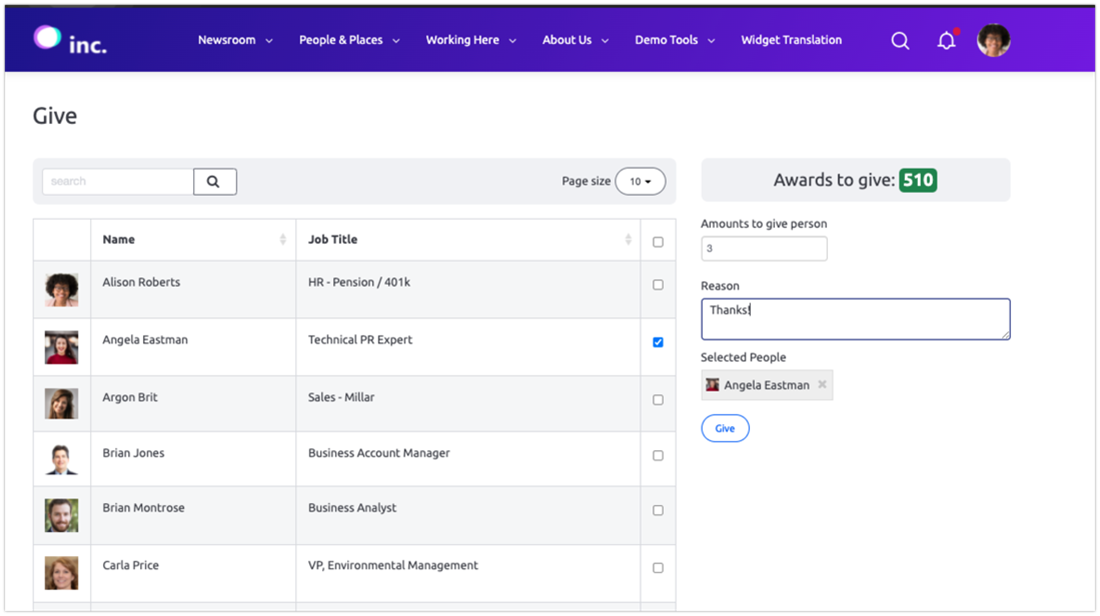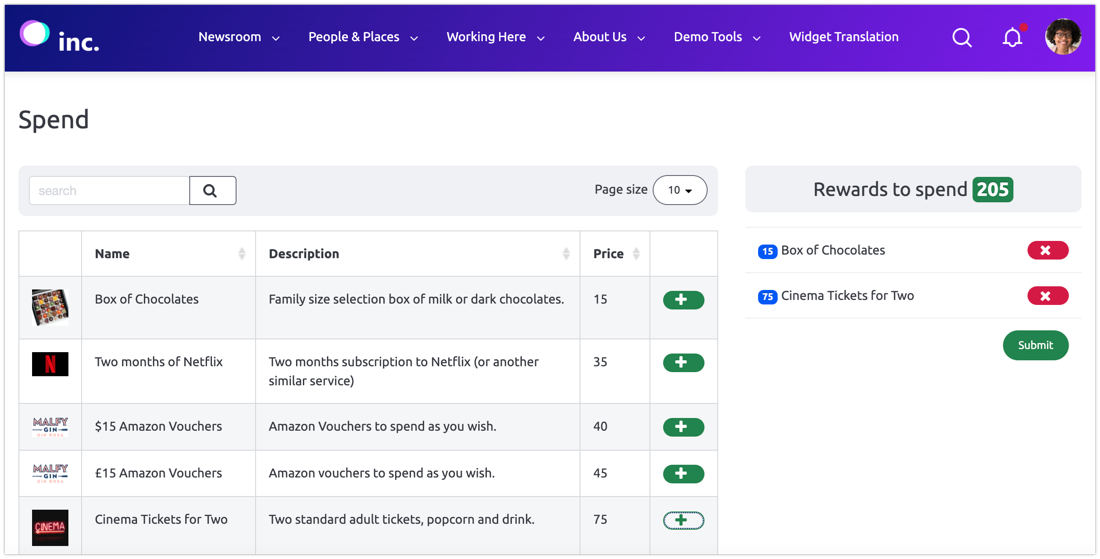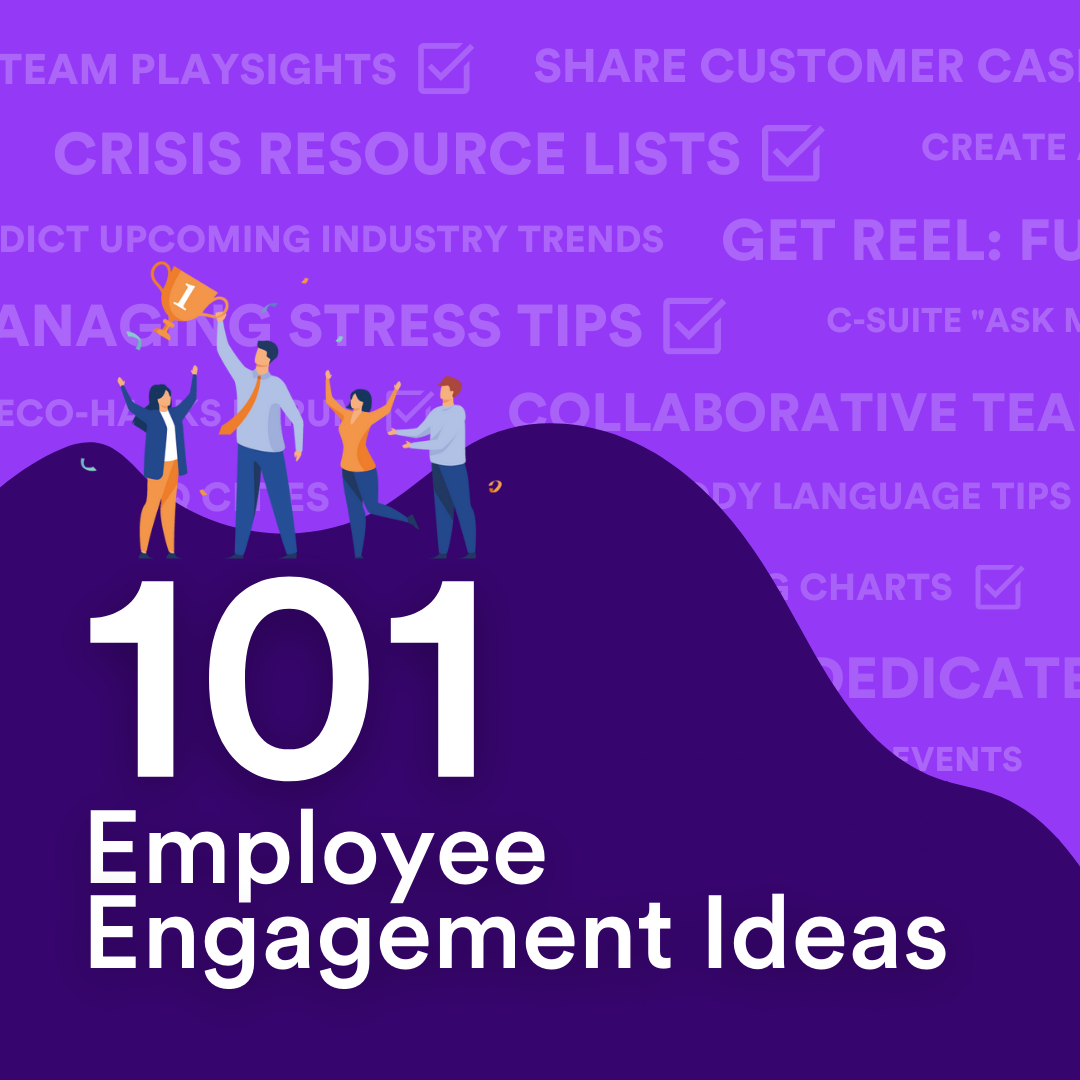Working for an intranet software company gives me a unique perspective. Not only do I have a front-row seat to how companies boost their cultures with practical employee recognition examples, but I also see the behind-the-scenes tools those organizations use to empower their Internal Communications and HR teams.
What I see from our customers makes it clear to me that the best way to improve retention, create great places to work, and increase engagement is to establish a culture of meaningful employee recognition.
This article illustrates some of the employee recognition examples I see from both our customers and other employers who lead the way in creating workplaces employees love.
Why is employee recognition important?
There’s a ton of research on how driving a culture of recognition promotes positive change in an organization. In fact, I often reference these stats when showing customers how best to use Interact’s rewards and recognition feature.
You’re probably already aware of the value of employee recognition, so I’ll keep it short:
- 37% of workers say personal recognition would encourage them to produce better work
- People who feel recognized are two times more likely to say their colleagues go above and beyond
- 91% of HR workers agree employee recognition drives staff retention
- Recognition is also known to improve employee productivity
It’s simple – companies that promote employee recognition have a better employee experience and keep their staff happy for the long term.
101 Employee Engagement Ideas
3 employee recognition examples from real businesses
Yum! Brands employee recognition programs
Stats are fine and all, but it’s real stories that drive home what works and what doesn’t. I recently came across the “Create a Culture of Recognition” episode on Tim Schurrer’s Build a Winning Team podcast with guest David Novak, co-founder and former chairman of Yum! Brands (KFC, Taco Bell, Pizza Hut, and more).

David Novak took his company’s value from $4B to $32B, and he distills this success down to one thing – “creating a culture of recognition.” That’s a lot of dollar bills.
“Recognition was the linchpin to driving our culture […] I believe in the concept of purposeful recognition…you recognize the behaviors you want to see and then you’ll see more of them.”
David Novak
What did David Novak and his companies get so right? For starters, they made employee recognition unique, personal, and fun. When he was President at KFC, Novak started a trend for writing accomplishments on a rubber chicken and presenting it with ceremony. When he oversaw Pizza Hut, the company started rewarding performance with giant cheese heads.
While these things may sound…silly, they represent the important idea that employee recognition programs don’t have to be solely about monetary rewards. A culture where people who like and respect us want to celebrate our achievements (and maybe even share a light-hearted joke) is a winning one. David Novak did these things to inspire others to develop their own cultures of recognition – to be leaders people want to work for.
Zappos likes it when you WOW

Another company celebrated for its successful employee recognition is Zappos, the online clothing retailer. Just like Yum! Brands, Zappos adds a dash of the unique and the personal to its efforts, which helps employees genuinely feel part of a team.
How does Zappos empower peer-to-peer rewards? For one thing, they make their rewards simple, yet worthwhile. It can get hot at the company’s headquarters in Las Vegas, so covered parking near the air-conditioned HQ entrances is something everyone wants. Rather than saving all the good spots for senior leaders, peer recognition means that every week there’s a new “Master of WOW Parking”.
Any employee can submit a brief story about how a co-worker WOW’ed, and they stand a chance of being singled out for that reward. Proof that great recognition programs can be simple and low in cost!
101 Employee Engagement Ideas
A Motley Fool in need is a friend indeed
Financial services company The Motley Fool has tons of employee recognition examples, some of which rely on performance, and some of which are simply great corporate culture.
When the company’s People Team noticed employees were scoring the organization poorly for recognition, they did something about it and instituted a new peer-to-peer recognition program where employees could send ‘gold’ to valued co-workers. These points could be redeemed for gift cards, used to book experiences, or donated to charity. It was an initiative workers instantly loved, and ultimately drove higher satisfaction rates.
The Motley Fool is famous for going above and beyond. The company’s Fool in Need program is a peer-to-peer collective where employees sign up to have a few dollars deducted from their paychecks every month. When the administering committee becomes aware of a co-worker facing financial hardship, they offer support pooled from their colleagues.
There is also the Fool’s Errand program. At their monthly all-hands meeting, the team picks a name from a hat and that employee must then take a two-week vacation within the next four weeks. It’s not optional – they must take two weeks off, unplug from work, and are even given $1,500 to go away with. The longer your tenure at the company, the more chances you have to be drawn. As employee recognition examples go, this one is hard to beat.
How can you improve employee recognition?
Even if your organization can’t start handing out two-week vacations or primo parking spots, there is still plenty of opportunity for your HR and Internal Communications teams to improve employee recognition in other ways.
When I speak to our customers, I show them how easy and effective it is to establish employee recognition programs through their intranet software. It’s built into the platform and can be administered in multiple ways so that every organization can flex as they choose.
Reward and recognize on your intranet
Our intranet rewards and recognition feature allows you to create a points or praise-based system embedded across your enterprise social network. It results in a platform where team members can give and receive recognition and see who is being celebrated and why.
101 Employee Engagement Ideas
When engaging in a points-based program, points can be accumulated over time and redeemed in any way that suits your organization – from trading them in for gifts, identifying an ’employee of the year’, or simply as a more public way of saying thanks.
Each company’s intranet will differ, but Interact offers the flexibility of three different approaches to praise and recognition:
- Recognition: Employees and managers can show they value their co-workers by publicly saying thanks or congratulations, or giving them a high-five on a job well done.
- Rewards with points: In addition to giving recognition, team members can associate their praise with points. The number of points given can reflect the size of your appreciation and can be used in other ways, such as identifying your ’employee of the year’ or purchasing appreciation gifts for your employees. Adding hashtags to what you write can even help to identify common ways you all live your values. At Interact, when people give public recognition, we’re also invited to reference our core values via a #hashtagged phrase. This is important because we can see our culture in action and appreciate the amazing work our co-workers do. We also have plenty to share externally about how to create company values.
We also allow teams to get creative with their rewards, naming them something to suit the organization. We see everything from points and kudos to donuts and diamonds.

- Rewards with points and award redemption: If you go the extra mile and fund your employee recognition program, the award redemption option enables employees to trade their accumulated points in for anything from gift cards to experiences. Although a lot of the items are simple tokens of appreciation (chocolates, wine, flowers, and so on), they provide an element of external validation and gamification that can spur people on to go further for their colleagues and the business.

For extra functionality and even greater adoption, ensure that praise-giving is enabled in your employee mobile app and that data reporting comes as standard. In Interact, all versions of the rewards and recognition feature allow data managers to see, for example:
- Which users have given and received the most awards in a specified time period
- Which users have given and received the most points (where applicable)
- The most common types of messages sent between users
This information enables you to see who is connecting, who is engaged, and who is well recognized throughout your business. If you’re interested in identifying your internal influencers and then using them to promote even greater intranet engagement with your internal communication, rewards data is highly useful.
How might you use these insights further?
Create a quarterly award
At the end of each quarter, collect information on praise or points and send out a list of the people who have been recognized by their co-workers and line managers.
From this longer list, managers can select a person for the quarterly award shortlist. This could be based on the number of points, the amount of recognition, or a qualitative interpretation of the praise (such as adherence to company values).
The second-stage shortlist is then considered by senior leaders who pick a winner. You can reward the winner with vacation time, gifts, more praise, or cold hard cash – whatever suits your team. A qualitative approach that takes account of praise rather than points alone is an especially good idea for being fair to people in smaller teams who may receive fewer votes or points purely because they have a smaller set of contacts.
Employee of the year
Rewards and employee recognition points also make it easy to run an ’employee of the year’ program.
Simply add up who received the most points or rewards throughout the year (the peer-to-peer element and widescale adoption will discourage anyone from gaming the system) and reward your ultimate champion with something suitably excellent.
Employee recognition examples in summary
In his podcast, Tim Schurrer makes the point that “recognizing people is not only fun, it’s the right thing to do.” He’s correct. Not only can you create a better workplace culture and make people feel valued, but you can also improve your organization’s bottom line by reducing turnover and increasing productivity. Yes, employee recognition must go deeper than simply using a tool on an intranet, but it’s a fantastic place to start.


